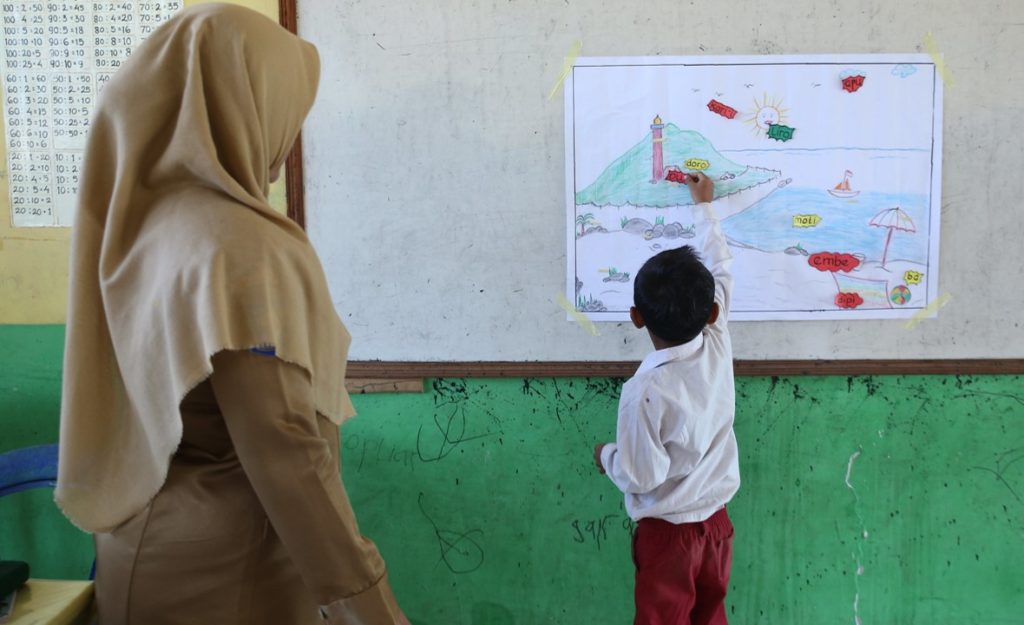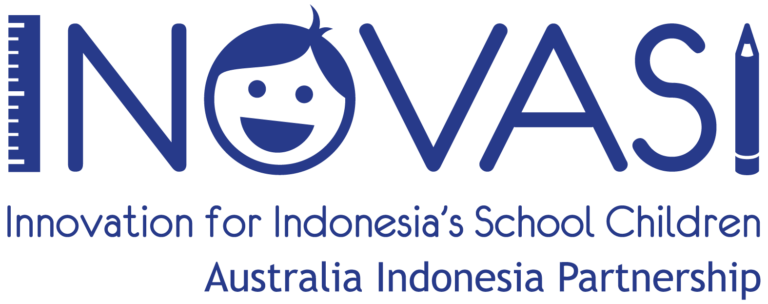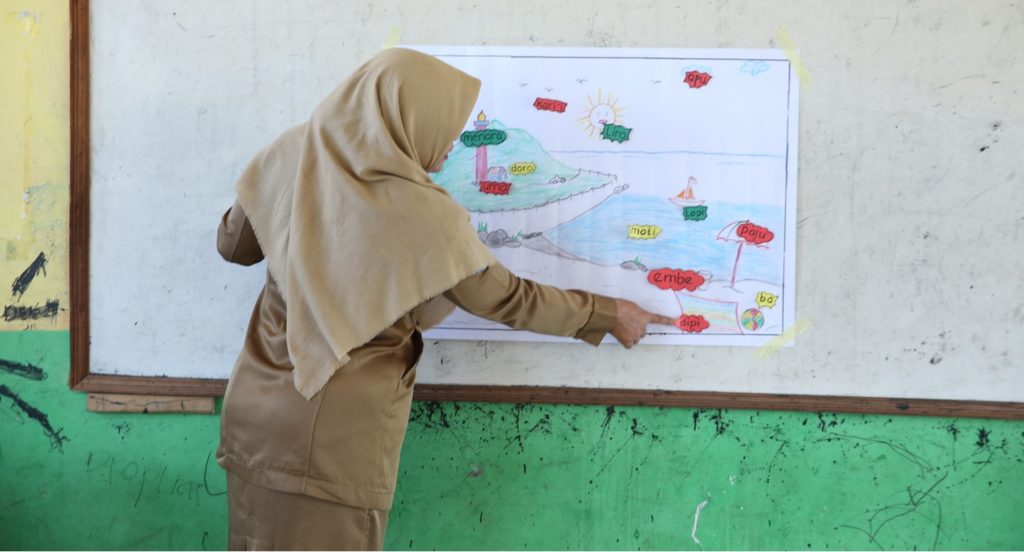
The language bridge method uses learning aids during teaching and learning. This learning media can be made by hand, such as the one created by Nurdiana, a teacher at SDN Sarikalampa state elementary school in Bima regency, West Nusa Tenggara (NTB). Nurdiana created a learning medium called the Thematic Map that can be adjusted to the material being taught to her students.
On one of her Thematic Maps, there is a scene of a beach that introduces the children to familiar things that can be seen when one goes to the beach, a place that Nurdiana’s students usually visit. To make this scene, she drew various objects that can be found at the beach, such as boats, large umbrellas for shade, houses, and lighthouse towers. Every object or activity in the picture has a description.
When using the Thematic Map in class, Nurdiana first gives information about the names of the objects in the local language of Mbojo, which is the daily language of her students. Nurdiana does this to simultaneously strengthen her students’ literacy skills.
The students certainly know how to pronounce the names of these objects or activities, but they do not necessarily know how to write them in Mbojo. Through this activity, the students start learning how to write the names of these objects and activities.
After seeing that the children recognize or understand the names of the objects and activities in Mbojo, Nurdiana then slowly changes the written description into Indonesian.
This learning model is one of Nurdiana’s efforts to enrich the students’ Indonesian vocabulary in her school, where the majority of the students still predominantly use Mbojo to communicate.
“I feel that using this learning model is truly helpful because the students seem to absorb the material more quickly. They seem to be more attentive during learning when I use colorful pictures. This is very different from when I introduced objects and activities in the old way, when I did not use any pictures,” stated Nurdiana.






